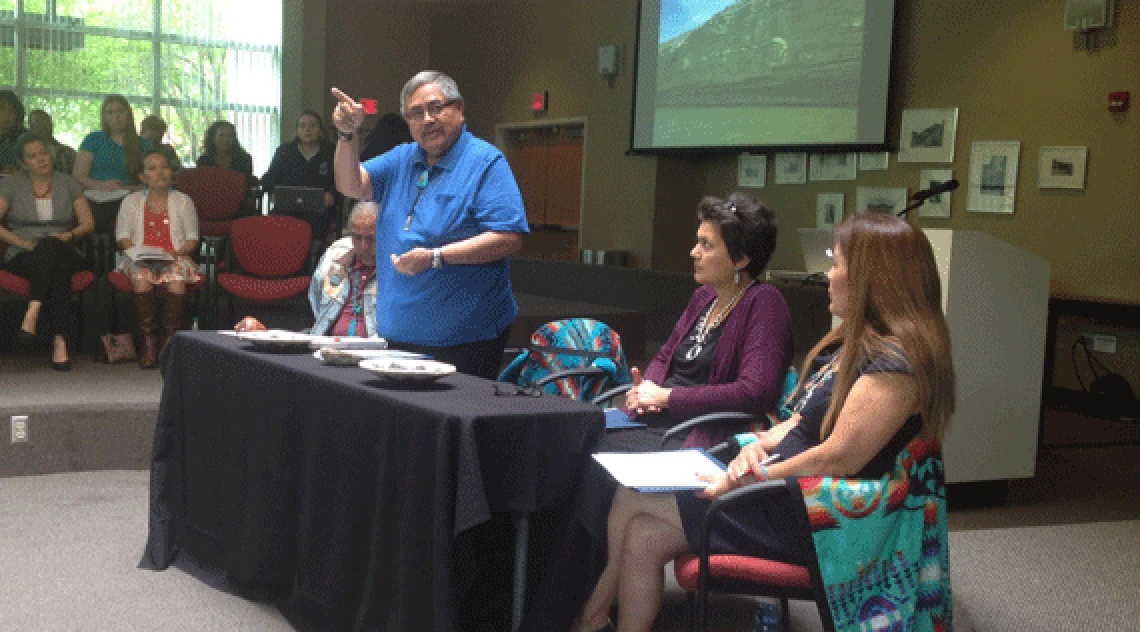Breaching Boundaries: SRP Researchers Host Forum on Navajo Perspectives on the Gold King Mine Spill


Dr. Karletta Chief, University of Arizona Superfund Research Program (UA SRP) Community Engagement Core (CEC) Principle Investigator, and Dr. Paloma Beamer, UA SRP Collaborator, hosted four members of the Navajo Nation in a panel discussion at the UA on March 29, 2016. The event entitled, “Navajo Perspectives on the Gold King Mine Spill,” was held to educate the larger UA community on the impacts of the Gold King Mine spill to the local Navajo Diné community and to discuss issues surrounding the ongoing marginalization of the Diné people. The panel included Chili Yazzie, Shiprock Chapter Government President; Perry Charley, Environmental Institute Research Scientist for the Uranium Education Program at Diné College; Dr. Jani Ingram, Northern Arizona University (NAU) professor of Analytical and Environmental Chemistry; and Mae-Gilene Begay, Director of the Navajo Community Health Representatives and Outreach Program.
The purpose of the forum was to promote personal connections and engagement between the Diné representatives and the UA community. The forum was based on a traditional Native American talking circle with panelists and audience members seated in a circular arrangement, encouraging group participation. Over 100 students, faculty members, and community members attended the panel discussion, which involved the active engagement of audience members in an open group dialogue as well as in one-on-one conversations with the panelists. UA SRP CEC Coordinator, Denise Moreno Ramírez, observed that many of the attendees seemed very interested in what the panelists had to say and asked a number of thoughtful questions.
Following the forum, the panelists met with Dr. Clark Lantz, Associate Director of both the UA SRP and the Southwest Environmental Health Sciences Center and Dr. Stephanie Rainie of the Center for Indigenous Environmental Health Research. Dr. Lantz summed up the day by saying, “Today was a great opportunity to connect with tribal representatives and to engage in a productive and collaborative form of discussion.” Panelists also toured campus laboratories where environmental samples are processed and analyzed to gain a better understanding of how sample analysis works. According to Mr. Yazzie of the Shiprock Chapter Government, this tour helped to provide an understanding of the research process and why sample processing and analysis can take longer than it would seem necessary.

UA students attending the forum both increased their awareness of the cultural and environmental impacts of the Gold King Mine spill and experienced the forum of talking circles as a way to enhance dialogue and discovery. Both Dr. Chief and Dr. Beamer plan to continue their work with the panelists, as well as others from Navajo Nation, as the UA SRP works towards understanding and resolving community concerns about the spill.

